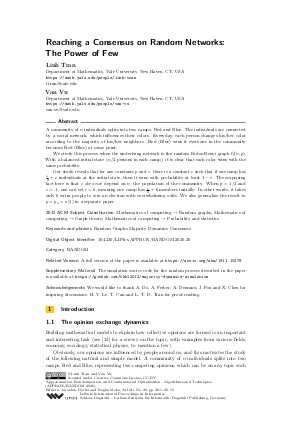LIPIcs.APPROX-RANDOM.2020.20.pdf
- Filesize: 0.51 MB
- 15 pages

 Creative Commons Attribution 3.0 Unported license
Creative Commons Attribution 3.0 Unported license



Feedback for Dagstuhl Publishing